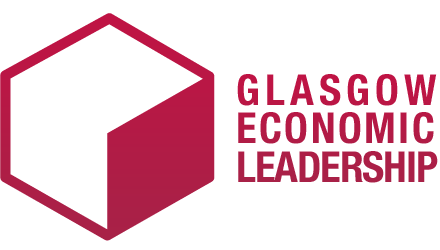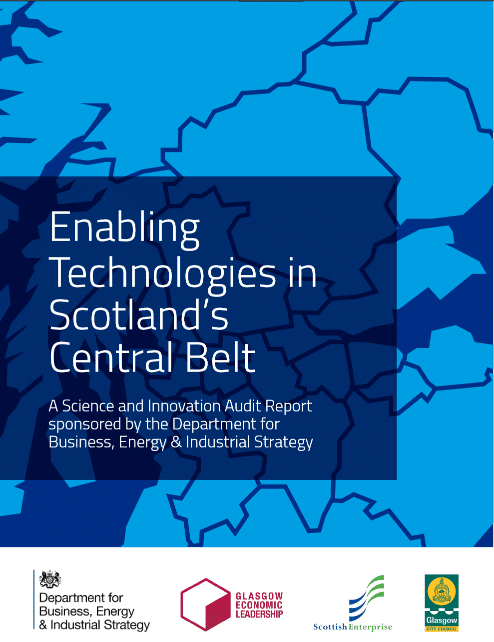A blueprint for doubling the enabling technologies sector in Scotland’s Central Belt has been set out in a report involving Technology Scotland.
 The Science and Innovation Audit (SIA), which has been produced by a consortium led by Glasgow Economic Leadership, featured Technology Scotland’s Senior Programme Manager, Dr Alastair McInroy, on the Steering Board. Also on the board were the Heriot Watt University, Scottish Enterprise, University of Glasgow and University of Strathclyde.
The Science and Innovation Audit (SIA), which has been produced by a consortium led by Glasgow Economic Leadership, featured Technology Scotland’s Senior Programme Manager, Dr Alastair McInroy, on the Steering Board. Also on the board were the Heriot Watt University, Scottish Enterprise, University of Glasgow and University of Strathclyde.
The report identifies vast potential in the region for growth in enabling technologies, which covers fields including electronics, sensors, photonics, industrial biochemistry and quantum technologies.
 It also sets out a vision for:
It also sets out a vision for:
• Doubling the region’s enabling technology asset base over the next 10 years
• Increasing productivity by 3% per annum in the manufacturing and infrastructure sectors, initially in the Central Belt but with scope to replicate the gains across Scotland and the UK
• Creating an internationally recognised cluster of enabling technology growth companies in the central belt.
Allan Colquhoun, Chair of Technology Scotland, said:
“Technology Scotland has been deeply engaged with the development of this Science and Innovation Audit. As the trade association for Emerging & Enabling Technologies in Scotland, we are delighted to have contributed to the report, which has identified the strengths of our Enabling Technologies cluster. Most importantly the report seeks to start a process to create the environment for a step change in the growth of our Enabling Technology companies and help drive the digital transformation of our manufacturing and infrastructure sectors. The Audit has set out opportunities and actions which will help our sector companies individually and collectively and Technology Scotland will play its part in building on this exciting collective vision.”
Although the Enabling Sector is relatively small in Scotland, producing 1% of GVA, it produces 10% of Scottish exports and invests 25% of business enterprise, research and development.
Proposals for achieving the aims of the audit’s vision include:
• Co-investment by the UK and Scottish Governments in the proposed National Manufacturing Institute for Scotland, as part of the UK High Value Manufacturing Network, in which Strathclyde is a partner
• Establishing headquarters and/or nodes of UK Catapult centres in the Central Belt
• Investment in the creation of a new, large-scale systems and integration centre, or ’virtual foundry, to facilitate the rapid combination and testing of quantum and photonics technologies
• Expansion of apprenticeships and work-based learning programmes
• Strategic investment to extend the scope and linkages of Strathclyde’s Power Networks Demonstration Centre, based in Cumbernauld.
The report also mentions several Technology Scotland members, including M2 Lasers, CENSIS, Fraunhofer and QuantIC.
Simon Andrews of Fraunhofer UK, who also participated in the Steering Group commented:
“this robust report underscores the strengths in central Scotland in photonics, Quantum Technologies and manufacturing, with great promise of an ever more successful growth period ahead. With excellence in the science base, capability and ambition in industry and support from organisations like Fraunhofer the region is extremely attractive for further investment.”
The audit was sponsored by the UK Government’s Department for Business, Energy and Industrial Strategy.
Business Minister Lord Prior said:
“The Science and Innovation Audits we are publishing today highlight the innovative strengths in regions across the UK and the significant growth and investment opportunities they present. Together with our record investment of an additional £4.7 billion for research and development to 2020/21, we are working closely with regional businesses and partners to ensure the ambitions set out in these reports are delivered to maintain our status as a science powerhouse.”
GO TO THE REPORT
